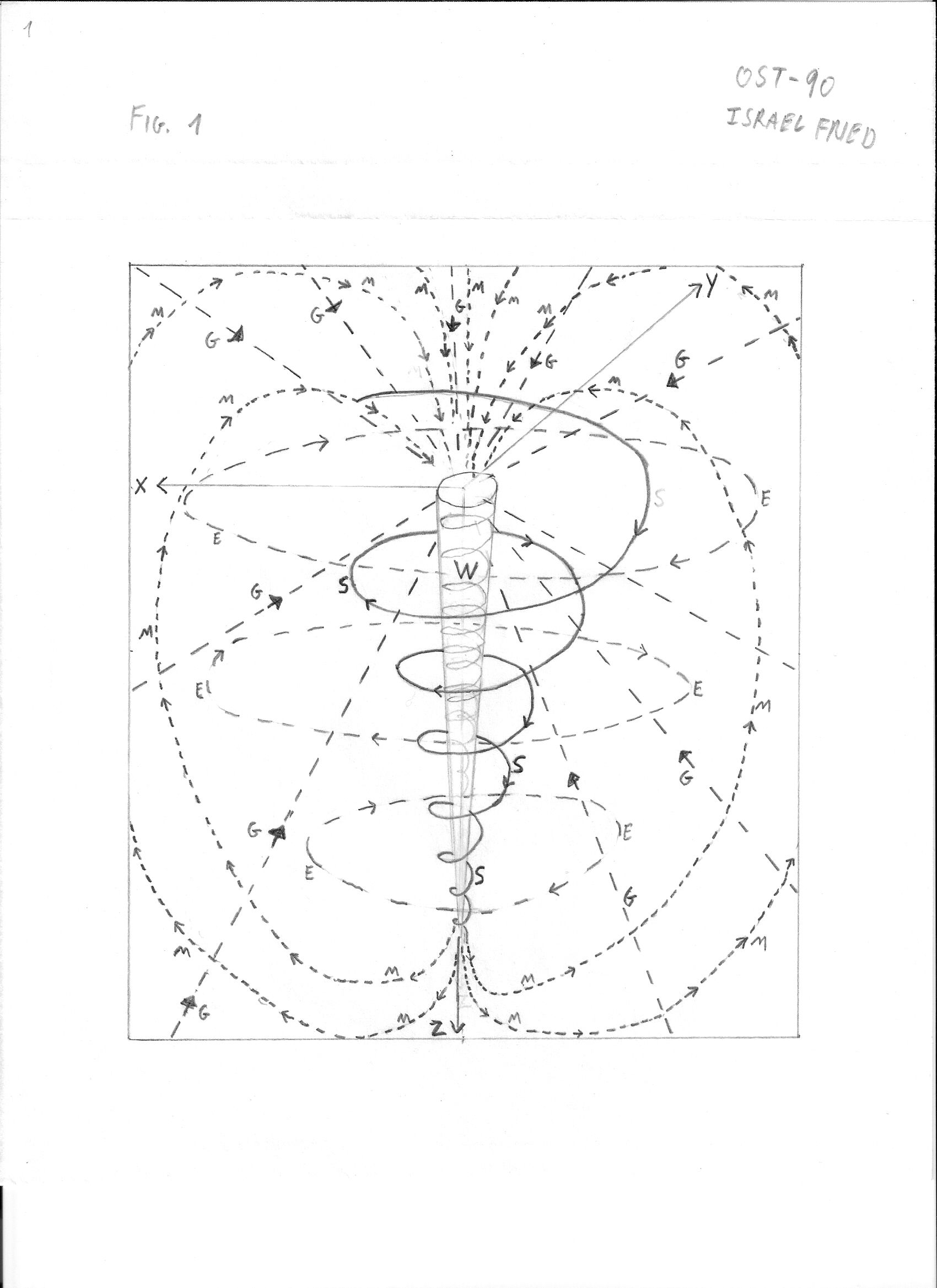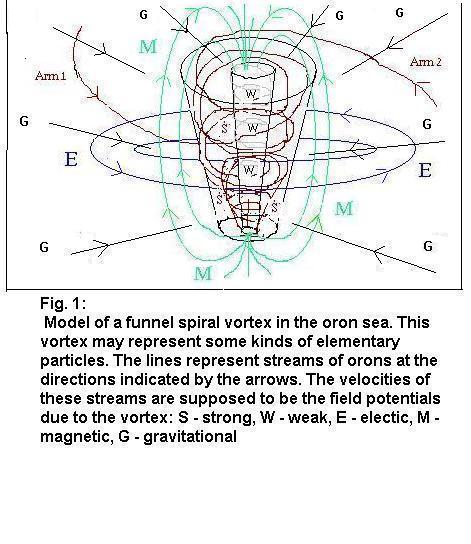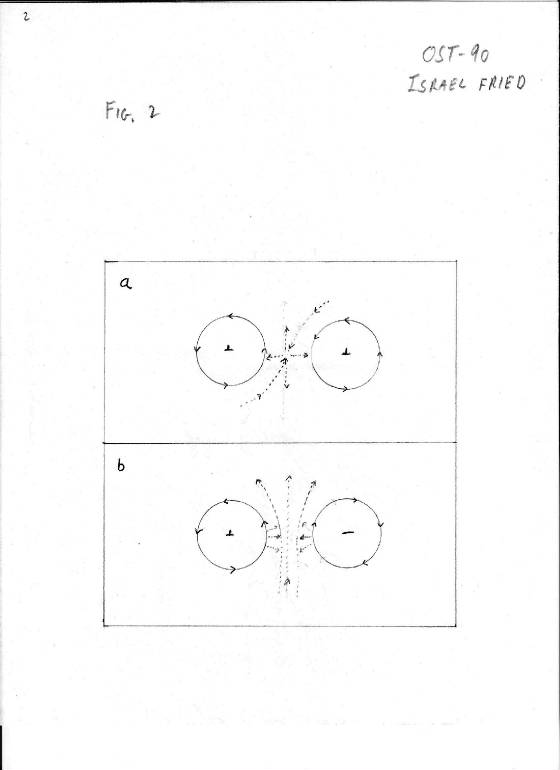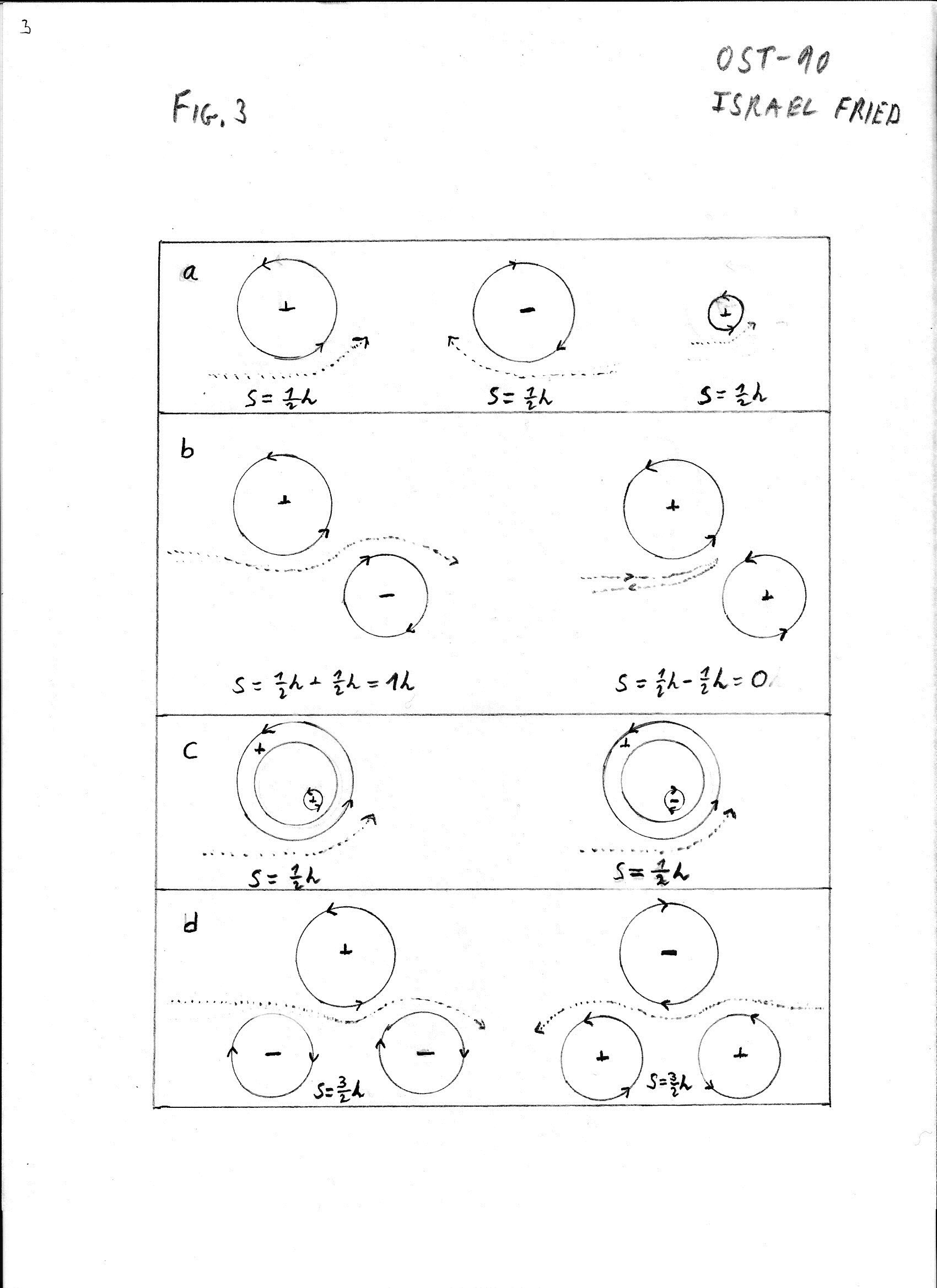|
Abstract (Copied
from OST-90 that you may download at the end of this page)
This article is the first of a new theory: "The Oron
Sea Theory" (OST). The theory uses a new way of treating physical phenomena. It uses analogies instead of physical laws. OST
attempts to explain all the phenomena in physics. The theory assumes the existence of a "non-continuous active ether" composed
of relativistic tiny particles, herein called "Orons", which fills the entier universe as a huge sea, "The Oron Sea". OST
assumes that all the phenomena that exist in an ordinary molecular fluid sea, exist also in the oron sea, as well as in cosmology.
OST explains the postulates of the Theory of Relativity as well as the Michelson-Morley experiment. Elementary particles are
supposed to be vortices of different kinds in the oron sea. OST explains the four basic potentials: Gravitation is due to
sinks in an irrotational oron sea. Electromagnetism is due to streams in a rotational oron sea. The Yukawa potential is due
to strong spiraling streams in a funnel vortex. The weak potential is due to the "eye" at the center of a funnel vortex.
We give a new representation of a photon, as a pair of cylindrical vortices in the oron sea. This pair behaves as a particle
as well as a wave at the same time. Antiparticle is a vortex of the same kind as the particle, but with opposite rotational
direction.
The same representations of elementary
particles, as vortices, also explain the shape of galaxies as well as the expanding of the universe. This phenomenon is explained
as the result of the relative motion of galaxies, due to their position on a hugh funnel spiral vortex in a "star sea". The
"black hole" is explained as a hole in the narrow side of a funnel vortex in the star sea. The "cold dust" is explained as
an "empty" space in the star sea. Many other phenomena are explained very simply by OST. We predict the hypothetical possibility
of creating, in a vacuum, artificial elementary particles, using strong magnets.
Additional Notes cited from the Introduction to my
Article "Remote Controllers for Creating Matter in Space" (2002) (see the Full Article in this site):
"The Oron Sea Theory (OST) [1] [2] [3] assumes the existence
of a sea, or fluid-like substance consisting of "orons", which are very tiny particles - of scales much smaller than the scales
of quarks, electrons, neutrinos, photons or any other known elementary particles. The speed of the orons is the speed of light
in a vacuum, c, or very close to it. (The name "oron" means in Hebrew "small light"). The OST hypothesizes that all the matter
known to us, directly or indirectly, e.g. galaxies, stars, molecules, atoms, elementary particles, quarks, gluons, etc., are
various vortex types within the Oron Sea. In addition, the OST hypothesizes as an axiom that all the phenomena that exist
in a specific scale level, such as in fluids, exist also at all other scales, such as the elementary particle scale and the
cosmic scale. This axiom based on the old concept of the author that space and time does not have physical existence [4] and
therefore there is no physical meaning to their scales. Recently the concept that Time has no physical existence is supported
by others, e.g. the book from 1999 of Mr. Barbour [5].
The OST describes various kinds of oron streams, each of
which represents a specific kind of force between elementary particles. The elementary particles themselves are represented
by vortices within the Oron Sea. The basic particle in the OST is represented by a spiral-funnel-shaped-vortex, like the shape
of a Tornado, with a "quiet eye" at the center along the main axis of the funnel. The elementary particles are supposed to
be different types of such spiral funnel vortices and are differentiated by the parameters of the funnel and the "quiet eye".
The articles on OST [1] [2] were regarded at 90' as too
speculative, and were therefore not accepted for publishing. Important developments in the past few years, however, have somewhat
strengthened OST. This theory, therefore, should now be considered. One of those most important developments was the analysis
of experiments at CERN, which shows an indirect evidence for the existing of plasma, Quark-Gluon-Plasma (QGP), at a level
below the nucleons [6]. The collected data from these experiments gave compelling evidence that a new state of matter was
created in which quarks and gluons freely roam within the volume of the fireball soap created by the collision. The conclusions
of those CERN's experiments are based upon theoretical works that describes the quark-gluon-plasma with thermodynamic equations
of very hot plasma, i.e. in terms taken from fluid dynamics such as the works in references [7] and [8]. This is in accordance
with the main hypothesis of OST regarding the level below the elementary particles.
There are also interesting developments in the cosmological
level that support the main hypothesis of OST. For example, discoveries in recent years show that the known Universe is not
homogenous but consists of straps of super-clusters of galaxies. This supports the hypothesis of OST, as described e.g. in
p. 5.3 of [1] that was sent to Nuclear Physics B: "It seems reasonable to suggest the possibility that all galaxies seen today
are moving on a spiral of funnel vortex, which we may call 'universe vortex' ". In addition, the recent discovery, based on
examinations of very distant galaxies, that the expansion of the Universe is accelerating instead of decelerating [9], also
supports OST. This accelerating may be simply explained by OST if one examines a sink-vortex within a pool of water. Imagine
that you are a tiny dwarf sitting on a one drop of water that is approaching the hole at the bottom of the pool into which
the vortex sinks. The closer you are to the hole, the faster you go. If you look at your immediate surroundings, you will
see the drops of water escaping from you at about a constant rate. Thus, you may describe the "universe of water drops" around
you as expanding at a constant rate. However, the drops that are very far from your drop will seem to you as if they accelerate
their expansion. For an outside observer they may seem as moving very slow. But as you see it, the greater the distance of
the drop, the greater the velocity of its "escape" from you. Therefore, now you may say that the "universe of water drops"
surrounding you is in accelerating expansion. OST thus predicts the accelerating in the expansion of the Universe. The "dark
matter" may be regarded to the "Oron Sea". The "dark energy" may be regarded as due to the expression of the mere existence
of vortices within the "Oron Sea".
Another recent cosmological development concerns with the
"black hole". The "black hole" phenomenon at the center of a galaxy is hypothesized by OST as the "bottom of the eye of a
funnel vortex in a star sea, such as the eye of a tornado" (see the same p. 5.3 of [1]). OST also expects that there is an
injection of lower scale levels of matter, from the narrow opening of the funnel. This injected phenomenon is "responsible"
in OST to the magnetic field of elementary particle. According to OST, streams of lower level of orons emergent from the narrow
opening of the funnel-spiral vortex. Therefore, the discoveries in recent years of injected rays from a "black hole" - in
a direction vertical to the plane of the galaxy - strongly supports the OST. I may note here that if the Universe is a huge
spiral-funnel of galaxies, as OST predicts, the "center of the Universe", which many scientists regards as the place of the
"Big Bang", is nothing more than the bottom of the "quiet eye" of the funnel-vortex in the galaxy sea. According to OST, the
bottom of the "quiet eye" of a spiral funnel-vortex, within any sea level, is the place where any such funnel begins or ends.
This is regarded to fluids (water pool, Tornado), to elementary particles (quark) and to cosmology ("black hole" - place of
"Big Bang"). It is that simple.
All those recent discoveries, and many others not mentioned
here, show today that the main assumption of OST, i.e. that the same phenomena exists within all the scale levels, is probably
true. Therefore, OST should be considered nowadays very seriously."
How to get the Articles on OST ?
Here is the first printed version of OST - the short article OST-89 including its 7 original figures.
In the following you may download the full article OST-90. The three figures of OST-90 are given
bellow while I add here the UPDATED Fig. 1 for representing the recent improvement in OST that regard each particle
as a double-spiral vortex.
OST-90 article (PDF 389 kb)
| Fig. 1 of OST-90 (The original) |

|
Here is the updated Fig. 1 of OST-90. Here
there are two spirals in the funnel-vortex, instead of one spiral in OST-90.

Note to this Fig. 1: The horizontal circles marked by E, for Electric Field, should
be regarded as representing small rotational helical streams, like many small screws, pointing in the direction of the funnel.
The rotational direction of those small screws are as the rotational direction of the spirals. Thus, for an inside observer
those small screws seems rotate in the opposite direction to the spirals. If the funnel spiral is a sink with positive
rotational direction, i.e. sink+, the electric field seems as negative. This is in accordance with, e.g. the electron
feature, which may be regarded as a sink+ vortex in the A-oron sea, while its electric charge is negative. In addition, there are many such circles of Electric field with tilt orientations, i.e. not only horizontal,
i.e. 90 degree angle to the main axis of the funnel vortex, as in Fig. 1, but with various angles between
0 and 90 degrees. Thus, when the funnel is turn upside down, i.e. its head up instead of down, the electric charge does not
change.
In Cosmology, the double-spiral funnel-vortex represents an ordinarry
galaxy.
The narrow base of the funnel is the place where some scientists
might regard as the place of the massive black hole, but according to OST this is a real transparent hole. In the limit of
this transparent hole the ordinary matter of the galaxy (sratrs, dust, gas, molecules, elementary particles, quarks, gluons,
photons, neutrinoes, etc. ) decompose to A-orons. The A-orons, and lower scale
orons, cannot be detected by human facilities. Thus, this hole is empty from ordinary matter, but is fule of A-orons, B-orons,
and lower scale orons.
| Fig. 2 of OST-90 |

|
| This figure ilustrates the idea of repulsing or attracting forces between two vortices. |
Fig, 2 of OST -90 ilustrates the idea of repulsion or attraction between two vortices, according
to the OST rule say that two parallel streams attract each other and two anti-parallel streams repulse each other.
| Fig. 3 of OST-90 |

|
| This Figure ilustrates the idea of Spin in OST. |
Fig. 3 of OST-90 ilustrates the idea of Spin in OST, according to which the Spin phenomenon
of a particle (funnel spiral vortex) is due to the influence of the particle on its surrounding, due to its rotation.
The value of the spin is regarded as the chracteristic of the medium within which the particle rotates.(see text).
To download the article OST-90 (without the figures), click in the following link.
OST-90 article (PDF 389 kb)
|

